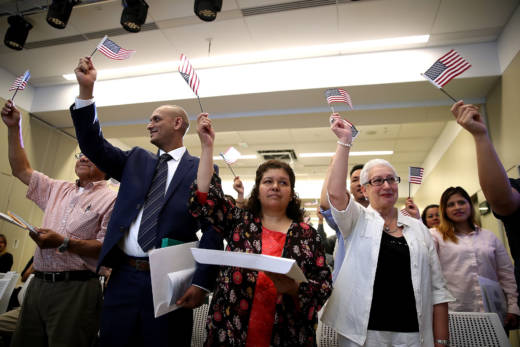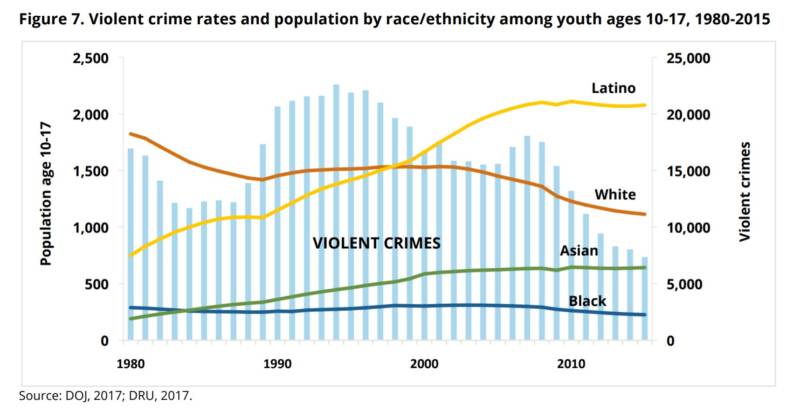Updated Friday, 7:45 p.m.
A recent report by the San Francisco-based Center on Juvenile and Criminal Justice finds a correlation between California's immigration-driven diversifying population and a drop in crime rates over the past 35 years.
Titled "Refuting Fear: Immigration, Youth, and California's Stunning Declines in Crime and Violence," the report comes amid national efforts pushed by President Trump to restrict immigration and crack down on those living in the U.S. without authorization -- largely based on arguments about crimes committed by undocumented immigrants and concerns over terrorist attacks.
"President Donald Trump is blaming people of color -- specifically immigrants from Muslim-majority countries and Mexico -- for causing increased crime, drug-related death, and 'American carnage,' " the report says. "However, California's crime trends in the all-minority population era have proven to be more positive than the nation overall. This is especially apparent in California's largest cities, many of which have established local policies, or must adhere to state policy, limiting cooperation with federal Immigration and Customs Enforcement (ICE)."
Policies limiting local law enforcement assistance to federal immigration authorities are commonly known as "sanctuary" policies, although no uniform legal definition exists. "Sanctuary cities," which include San Francisco, San Jose, Oakland and hundreds more across the U.S., have been targeted by the president through an executive order blocked by a federal court and by Republican legislation in Congress.
The U.S. House of Representatives passed two bills on Thursday related to "sanctuary" cities: One would revoke some federal grants to those cities, detain more people who are awaiting deportation hearings and allow crime victims to sue cities that refuse to detain people for immigration authorities. Another called "Kate's Law," named for Kate Steinle, who was fatally shot in San Francisco in 2015 allegedly by an undocumented immigrant who had been deported several times, would increase criminal sentences for people caught re-entering the U.S. after a previous removal.
"There are a lot of parallel trends that suggest that immigration has an extremely positive impact on California," said Mike Males, the report's author. "It’s just the opposite of what the debate in the U.S. House of Representatives yesterday would make you think is going on."


